HIStalk Interviews Stephen Brown, Director of Preventive Emergency Medicine, UI Health
Stephen Brown, MSW, LCSW is director of preventive emergency medicine at University of Illinois Hospital and Health Sciences System.

Tell me about yourself and your job.
I’m director of preventive emergency medicine at University of Illinois Hospital and Health Sciences System. I run the Better Health Through Housing program, which identifies the chronically homeless in our emergency department and transitions them into permanent supportive housing. We’ve been doing this since 2015.
My background is in technology. I worked for Motorola for 13 years in a variety of capacities, starting off as a junior systems engineer and then ending up being a district sales manager. I was also a product development manager and a senior account executive. I transitioned into healthcare in 2005, working in the emergency room at the University of Chicago as a social worker on the South Side of Chicago, surrounded by 10 of the 14 poorest neighborhoods in the state of Illinois. Then I transitioned to University of Illinois in 2011 to start a preventive emergency medicine program.
What motivated you to move from a technology and sales career to becoming a social worker?
I always loved the technology, but being in sales, you’re only as good as your last sale. I just got tired of living under quota. Plus, after doing some career development things, I discovered I was an introvert and that was why sales was so painful for me. [laughs]
It was a career transition, a mid-life transition. By 40, I decided I wanted to do something that was more altruistic. I originally was going to become a psychotherapist and start my own private practice, but I worked for Michelle Obama at one point in my career at the University of Chicago. We had some discussions and I decided that I wanted to do bigger work than just one-on-one counseling. This was an opportunity to do more population health work.
Does simply giving someone who is homeless a place to live help reduce the high healthcare costs they incur, or is the next step to identify and address any underlying behavioral or dependency issues?
This partnership has been with the Center for Housing and Health, a supportive housing agency here in the center of Chicago. They have relationships with 27 agencies scattered around the city.
What we’re learning is that it’s a tiered approach. Many people will just require what we call rapid re-housing. We don’t quite have the answer, but we’re in conversation about tiering the approach based on psychiatric and substance abuse characteristics. They are medical conditions for homeless individuals. We had somewhat of a lower level. It was scattered site housing. It was permanent supportive housing, but it came with a housing case manager, somebody who’s not trained in medicine or in psychiatry. Despite that, we still had good outcomes.
Are views changing on our expensive system of providing healthcare services vs. funding social programs and public health projects that might reduce the need for them?
Some studies have been done on that. We have great sick care in the United States. We wait for you to get sick, and generally you’re going to be sicker because you haven’t had preventive services. We don’t do prevention, nor do we address the social determinants of health.
There have been a number of studies around around the world where the relative spending on healthcare is much lower. I think we spend 2.5 times per capita for healthcare here in the United States compared to other industrialized countries. Healthcare costs are excessive. I think it’s approaching now 17% of our GNP.
But the other thing that is missed is that other industrialized countries spend more on social services and on prevention services. Having a safety net in place goes a long way toward preventing people from getting a lot sicker. That’s where a lot of the attention is in healthcare now, what we’re calling the social determinants of health. If you don’t have a stable place to live, it’s difficult to manage any of your health affairs, let alone anything else in life.
We’re really good at individual care here in the United States. We focus on the individual. What has been missing in healthcare is hospitals taking responsibility for the health of the communities in which they serve. After all, I think it’s 78% of the hospitals in the United States are non-profit and must demonstrate some type of community benefit to maintain that non-profit status. That shift in focus says that we have to care about the health of the individuals coming from the communities in which we are anchored, and yet that’s been a big disconnect in healthcare.
The technology exists to be able to create community-based report cards. Hospitals should be held accountable for the health of those communities in which they serve. There’s a way to do that through clinical measures, like aggregated hemoglobin A1C in a community, blood pressure, and number of ED visits for asthma exacerbations. Those are all things that are measurable and that health IT could take an active role in bringing forth. That creates accountability for hospitals — perhaps even a collection of hospitals if they serve the same geography — to take ownership of the health of the individuals within those communities.
The alignment is clearer if the health system is also the insurer, such as Kaiser Permanente. Health systems keep getting bigger and spanning state lines. How will those mega-systems work with the many communities in which they operate?
It remains to be seen. We are seeing some activity from Geisinger and from UnitedHealthcare. United Healthcare Is working with the American Hospital Association to develop 20 new ICD-10 codes for social determinants that would be actionable. We can document these things, but unless we take action on those social determinants, they’re really not going to go anywhere. I’m in conversation with a Denver health plan right now about replicating the model that we’ve created and a number of other health systems around the country.
The most interest is coming from those integrated health systems that are both the provider and the payer. It’s in their economic best interest to prevent people from getting very, very sick. We’re beginning to get interest from managed care organizations, too, many of which are represented by larger health insurance companies.
In any state, 5% of the patients in Medicaid account for about half the budget. Generally those budgets can consume about a third of the state budget. Because we’ve been so focused on individual care, we’ve lost the forest through the trees on those. There needs to be some attention on more of a population health model, not only at the state and federal level, but also within some of those large health systems, too. There’s tremendous opportunity to manage the health of these individuals by looking beyond the walls of the hospital and saying, what is it in a community that is driving the exacerbation of disease and poor outcomes?
How you see the pacing of the buzz about social determinants of health being matched by the creation of programs that will make them useful for actually changing something?
What happens with social determinants of health is that we try to do it the old, inefficient way. We hire a bunch of people. We screen in emergency departments. We’ve had some experience doing that. We’ve only been able to hit maybe 2% of the entire ED population because we’ve done it in the manual way. Again, here’s an opportunity for tech to get involved. When you bring big data to bear on this issue, you can find lots of things that you can elevate for risk and make it actionable.
Adverse Childhood Events, or ACE, is being promoted by the CDC. The chronically homeless fit the same profile over and over again, as 60% of the chronically homeless or the homeless in general have what we call high ACE scores. It’s a 10-question questionnaire that predicts poor outcomes, the development of psychiatric illness, and early death, among a variety of things. It’s kind of astounding.
We found that our chronically homeless individuals fit the same profile over and over. You’ll find this is true in criminal justice, too. The higher the ACE score, the higher the probability that person is going to end up on welfare, will have a mental illness, will end up in the criminal justice system, and will die early. One or both of the parents had mental illness or substance abuse and it played itself out on a profile where that person ended up becoming chronically homeless and developed serious mental illness.
You can find those things in a combination of electronic medical records, in public data, and in credit data. A number of emerging companies are looking at data mining to find those folks who have elevated risk. For example, with classical homelessness — somebody who has fallen off the grid because they’ve had some financial catastrophe or income volatility in their lives — you can find those people easily in credit data. You can predict the risk of homelessness eight to 12 months before it actually happens.
The way healthcare responds to that is inefficient, but there are opportunities to find people with a high ACE score and intervene with them early, because you’re going to see it play out in a lot of different things that are going to result in poor outcomes.
I’ll give you a vivid example. When I worked at the University of Chicago, there was a lot of crack cocaine on the South Side of Chicago. We would often get women who had cocaine intoxication. They were hyperkinetic or manic. Once we allowed them to detox on cocaine, I’d go in and interview that woman. The doctors were focusing on whether or not she was going to have a heart attack, so they were looking at elevated troponin and all these medical characteristics. They had a medical course of action. They were treating the symptoms of what is a greater problem.
When I dug into it, I found that the typical scenario was that the woman that had been repeatedly sexually abused when she was eight years old by her stepfather or uncle and had undiagnosed PTSD as a result. She had a very high ACE score and we hadn’t done anything. We got her treatment for her substance abuse, but she probably needed treatment for PTSD, too.
How can technology fit into a program like yours?
The big piece of it is bridging the gap from healthcare into the community. The FHIR standard is a promising technology, but as we found with the CMMI Accountable Health Communities, there is a substantial gap in tech between health IT and community IT. Many people are still dealing with spreadsheets. If the provision of a social service or community-based services is going to be effective, we need to be able to track whether or not that person actually got the service. Then, was there a treatment effect from that service?
What we’re doing here on the West Side of Chicago with the West Side United effort — a collection of five hospitals — includes a lot of economic development. Things like wealth management classes. We’re doing local sourcing for our supply chain. We’re trying to partner with colleges to create a talent pipeline and steer kids in the community into careers in tech and healthcare.
But beyond that, we need somehow to bridge the gap. Some of the things we’ve been talking about is giving out case management solutions, so we have just one platform for the community that can provide data on the receiving end. Those are going to be some of the biggest challenges we’re going to be facing if we are really going to tackle these social determinants of health.
The other thing is that I’m a big believer in microservices and having the ability to have an app store kind of arrangement for human services. Something that is plug-and-play and easy for JavaScript programmers to integrate and exchange data with healthcare organizations. But we’re going to need some enabling technology on that. We have a grant with the JB Pritzker Foundation to do cross-sector data exchange. In order to drive clinical integration of systems, we’re going to need to be able to have some kind of common appliance that can manage the traffic and flow of messaging and interoperability between human services and healthcare. This is a particular issue here in Chicago because we don’t have a healthcare information exchange.
The other piece of is from an evidence-based public policy, to be able to track individuals and their service utilization. In an ideal world — especially with these homeless individuals that we’ve found to be very, very expensive — we’re only looking at the most obvious cases. But as a population, how could we look at their healthcare costs? We know they have elevated healthcare costs, but do we know for the entire homeless population what that looks like? We’re only looking at mostly the chronically homeless, those who have been continually homeless over for a year. We need to have more resources available to do interoperability for both clinical integration purposes and to bring together large public health data sets so we drive evidence-based public policy.
A fair amount of national empathy seems to have been replaced with resentment toward social programs and those they help. Is there a message of hope that these programs work and will be accepted?
You see these bright spots happening around the country. Bexar County, Texas, which includes San Antonio, has a psychiatric stabilization center where they divert people in psychiatric crisis to a center where they are treated. They don’t have to go to the ED or jail. There’s a lot of good work happening. It just doesn’t get publicized because it’s a little bit wonky.
My job is more public policy and aligning systems so that they talk to each other. I think that we’re going to see some tremendous benefits from those things, because no matter what your political affiliations might be, we’re discovering that at least with some of these populations, the solution is cheaper than the problem. We would all feel better about ourselves if we look at how we can care for these people in ways that will extend their lives and keep them from getting sick. It’s also the right thing to do.
Here in Chicago, we’re having extraordinary conversations with the jail, with Cook County Health, the other public hospital here, and with Illinois Department of Corrections. We’re creating a flexible housing pool that will result in more supportive housing, with about 750 new units coming online. We haven’t borne the fruit of it, but I’m optimistic that we’re going to see some major sea change in how we treat the homeless and other marginalized populations. Especially non-violent offenders. Can we offer them alternatives to prison or jail? I’m seeing a lot of work in the opioid crisis right now. The sheriff’s department is creating a diversion unit. Hospitals are learning that if you want to treat the opioid crisis, you have to go out to them. They can’t come to you.
The glass is half full, as far as I’m concerned. We’re doing a lot of great work that will bear fruit very shortly.







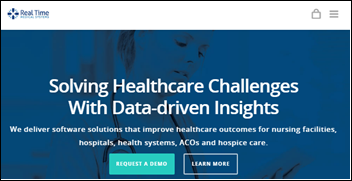


















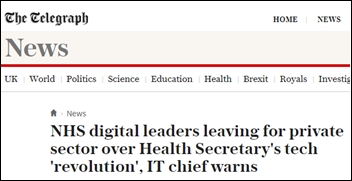




















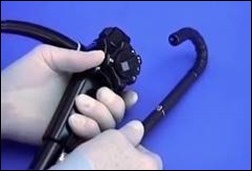


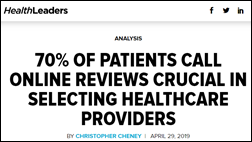




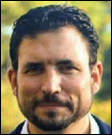
































































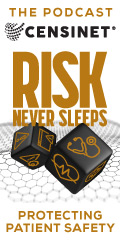


























Would have liked to have seen more about Expanse here. Would like to see more about it on this site…